Whup, whup, whup. The sound of the helicopter cuts through Brittany Cervantes’ tortured thoughts. Whup, whup, whup. Snakebite. Whup, whup, whup. Heart not beating. Whup, whup, whup. Eli!
She falls to the ground, overcome. The world swirls and everything blurs except the twilight sky and the whup, whup, whup of the waiting medical helicopter.
Metres away, paramedics are working on her two-year-old boy, Eli Campbell.
Sweet, funny, clever Eli. Little Eli who was riding his bicycle beside her an hour ago.
Little Eli who took off, as kids do, and veered towards the chook shed on their acreage at Agnes Water, 480km north of Brisbane. Little Eli who toddled after a chicken, was bitten by a snake and is now technically dead.
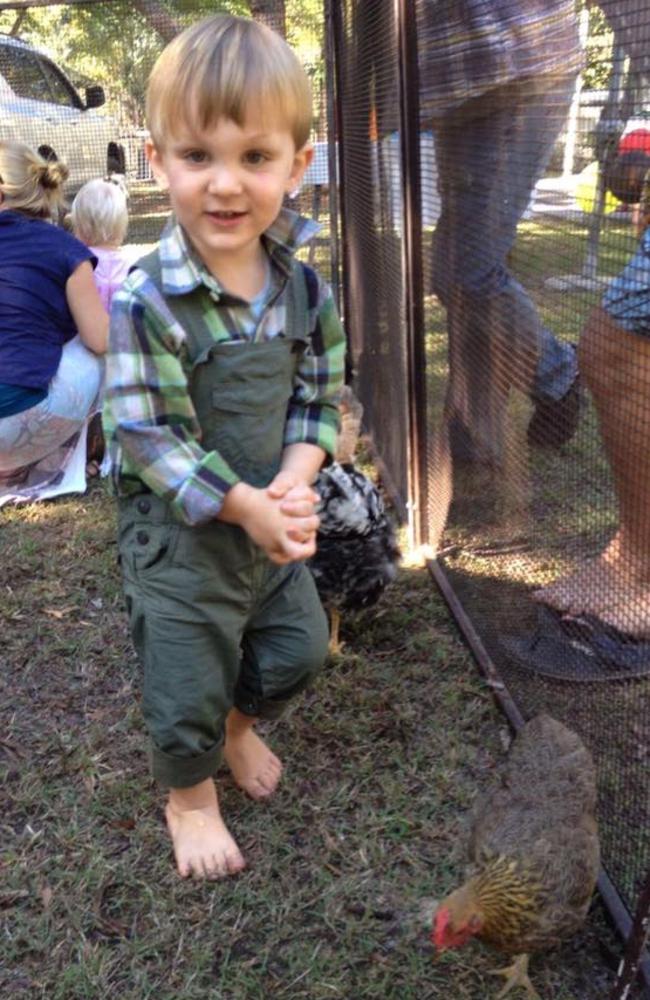
Cervantes feels her partner, Giles Campbell, beside her. He lifts up his 14-weeks’ pregnant partner and leads her to their car.
How many minutes have passed? Three, four?
Campbell looks in her eyes and says, “You have to be ready to say goodbye. He’s gone.” Cervantes stares back. A phrase tumbles from her lips, over and over. “No. This is not how it ends.”
The chopper pilot approaches.
“I need you to look at me,” he says. “I need you to focus on my words.” They’re going to give Eli – little long-limbed, lithe Eli – a shot of adrenalin. “You’re going to hear a noise,” he says. “Don’t look over there,” he adds. “Just breathe.”
Time melts. How long has it been? Five, eight minutes? A paramedic comes over.
“He’s breathing,” he says.
“We’ve got him intubated; his heart is working. He’s alive.”
Cervantes’ heartbreak turns to hope but she feels she’s being ripped apart, “a feeling so big, it was never meant to be contained in the body”.
Eli is far from safe. He must get to hospital to be given antivenom.
All the medics need to go with him in the chopper. There’s no room for his parents. They’ll have to drive the one-and-a-half hours to Bundaberg.
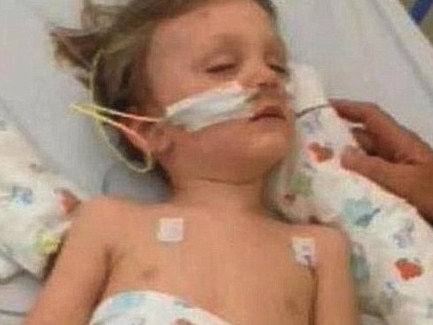
So they drive, in silence, not knowing if their son will be alive when they get to Bundaberg. “I remember sitting forward in my seat, leaning forward, trying to get there faster,” Cervantes says. “Neither of us said a word.”
They pull up outside emergency and race in. He’s still alive, staff say. They’ve given him the antivenom, identified the snake. A taipan.
“The blood just completely fell from my face,” Cervantes says . “I nearly fainted. You hear about browns all the time, but a taipan, it was a thing of legend.”
Eli is flown to Brisbane that night, September 25, 2016. He will live, the youngest Australian known to survive a taipan bite. But while the venom will leave his body, effects will linger. For him and his parents.
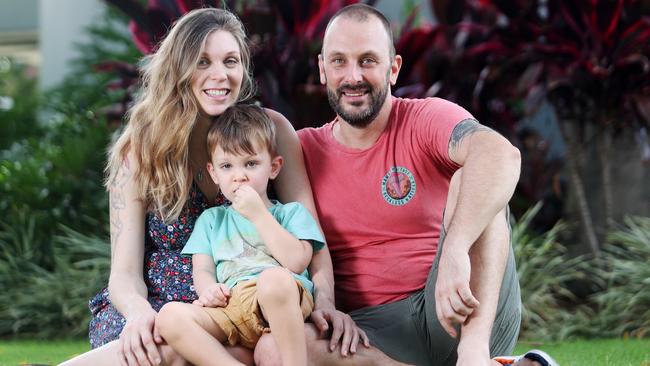
WORKING ON A DREAM
They travelled up the east coast of Australia, searching for a dream. A home on acreage where they could build a sustainable life, start a family.
They’d met in Mexico in 2012, the English scientist and the Californian traveller. Campbell, now 45, with a degree in zoology and Masters in biodiversity and conservation genetics, had quit his CSIRO job in Tasmania and headed on an overseas adventure.
When Campbell was in the US, mutual friends suggested he meet Cervantes, now 28.
“He flew from the States to [Mexico] meet me and we were pretty much inseparable from then,” Cervantes says.
She followed him to Tasmania, they packed up and set off exploring.
At Agnes Water they found what they were looking for. A 16ha block surrounded by paperbarks and gums, an established house with a big veranda, saltwater pool, small chicken pen and heaps of sheds.
In 2013, they moved in. Eli was born the following year, in July.
The idyll grew. They planted fruit trees: mangoes, citrus, dragon fruit, custard apples, soursop, star apples. They got chickens. Built a dam.
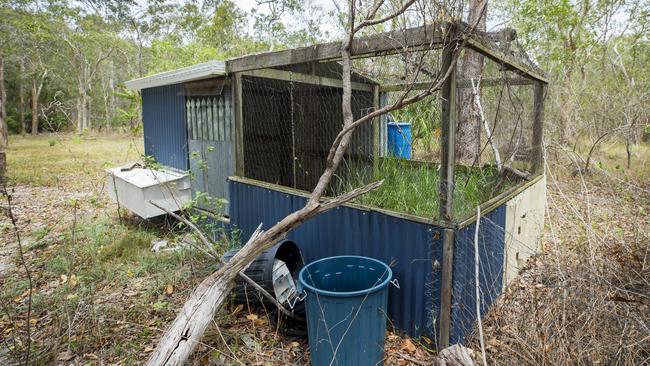
They were down at the dam that Sunday afternoon in spring, checking on the fish. Just before 5pm, Cervantes and Eli set off for the house on their bikes. “You got him?” called Campbell as they took off. “Yep,” she said.
As they neared the house, Eli took off around the back, near the chicken coop. Cervantes followed and noticed the chickens needed water. She stopped. She’d fill the water. It would only take a minute.
Eli waited behind her. Sometimes, he’d accompany them as they collected eggs but he was not allowed to play out there. Campbell was hyperalert to the fact the coop – about 80m away from the house – backed on to the bush and snakes might lurk there.
“Eli was at the door, about two feet away from me,” says Cervantes. As she filled the water, a chicken jumped onto a ledge, then out. And Eli chased it. She dropped the jug and went after him.
“Then I heard Eli shouting, ‘Ow, ow, ow’.”
Cervantes dashed around the side of the coop to see Eli walking towards her with a shocked look.
She picked him up. He kept pointing to the ground. She put him down to look at his legs.
“I could see tiny dots of blood on his right thigh, two going one way, two the other way, like a cross.” (Another “dry” bite was later found on his left leg.)
Filled with fear, she regathered Eli and started edging backwards, scanning her eyes about the coop.
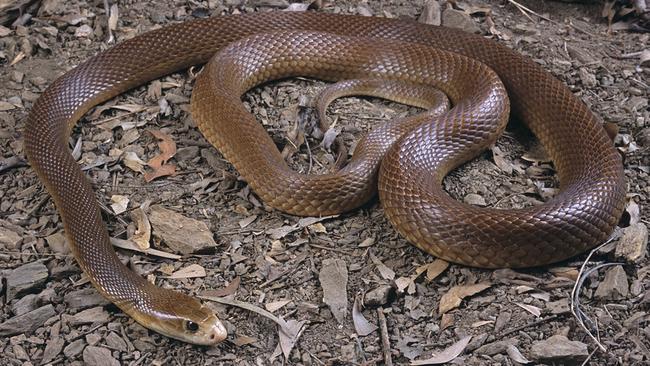
Then she saw the snake; it was slipping along the other side from where it bit Eli, heading towards the scrub.
It was about 1.5m, deep, rich brown with a caramel underbelly.
As Cervantes stepped back, it turned towards them. She picked up a feed tin, hurled it into the bush; it followed the noise and she bolted for the house.
“I’ve got Eli scooped up and I’m running back with him to the house and just screaming to my partner, I just screeched his name and he came running and I told him, ‘Eli’s been bitten by a snake’.”
They called the ambulance and were told to keep him still, bandage the wound and immobilise his leg.
A wrap became a bandage. Campbell snapped off a piece of a cane-like plant growing at the front steps for a splint. For the first 10 minutes, Eli seemed OK. “He wasn’t crying, he wasn’t ridiculously in pain.”
Then he started to lose colour. Then he went purple. He grew drowsy. He started vomiting.
The ambulance arrived in about 15 minutes.
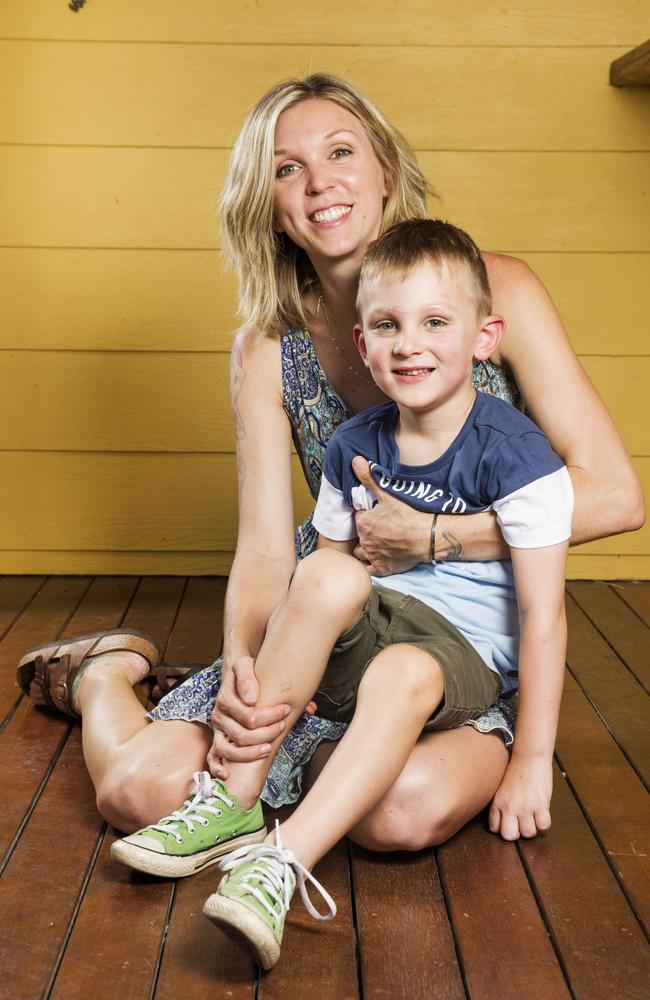
“It got very serious, very quickly.” Cervantes lay on the stretcher and they put Eli on top of her. He was floppy, drifting in and out of consciousness. The paramedics were battling bad mobile reception, trying to get instructions; do they drive to Bundaberg or head to the helipad?
Finally, word came through that a LifeFlight chopper was on its way. Campbell followed in the car.
As they arrived at the landing pad, about 10 minutes away, Eli went into cardiac arrest. Suddenly, Cervantes had to let her boy go, had to shuffle out from underneath him and give his life over to the medics.
Whether Eli would have survived if they’d driven to Bundaberg will never be known but paramedics have told Cervantes a cardiac arrest is not something to deal with on the road. The chopper had Eli in Bundaberg in 20 minutes, the antivenom into him before his petrified parents arrived.
So many decisions were made that day, and in the next few weeks. Some worked out. Some haunt them.
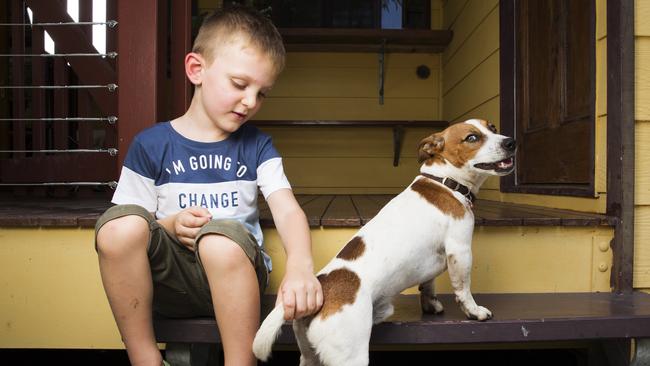
ON THE ATTACK
The coastal taipan attacks. It does not slink away if surprised, it attacks. It rears up and strikes with lightning speed, multiple times.
It has long fangs and sinks them deep. Its bite is far more likely to inject venom than that of the short-fanged brown snake. Its second and third bite can be as potent as the first.
Put simply, says Professor Geoffrey Isbister, a clinical toxicologist and member of the Australian Snakebite Project, “it is definitely our most dangerous snake”.
Grown men succumb to its venom.
Yet here is little Eli, breathing. Hooked up to monitors, and in an induced coma, but alive. It’s early in the morning of Monday, September 26, and Eli and Cervantes – pregnant, running on adrenalin – have flown with the medical retrieval team to Brisbane’s then Lady Cilento Children’s Hospital. Campbell drives through the night from Bundaberg.
Eli has an MRI soon after arriving because a cardiac arrest cuts oxygen to the brain and can cause a range of injuries. The news is good – Eli’s brain function is normal.
Now they have to wait for the antivenom to do its job.
“They were monitoring his bloods, the venom was wearing out his muscle tissue,” says Cervantes. “They’re watching the levels of different proteins rise and watching them plateau, because the antivenom is kicking in.
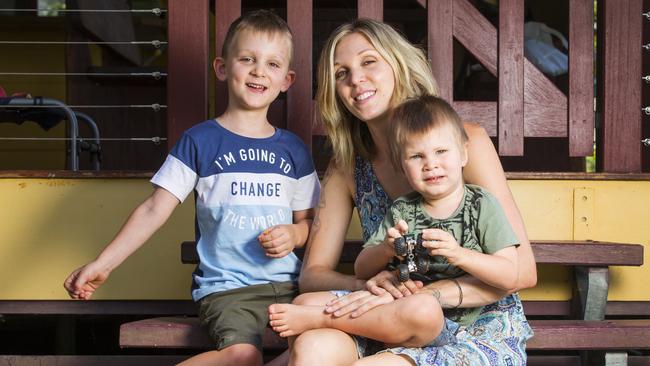
“Then it starts to decline and things start to level out. By day two, they say to us, ‘It looks like he’s going to make a full recovery’.
“That gave us so much hope, but it was so hard to see our son, who was still losing muscle mass, getting skinny,” Cervantes says. “He was pale, so tiny. He looked so fragile.”
A fragility had also entered Cervantes’ and Campbell’s relationship. As they sat exhausted in the hospital, Cervantes felt a wedge between them. Campbell didn’t want Eli at the chicken shed and yet he ended up there in her care. And was bitten by a taipan. Blame, guilt, “if onlys” hung over them.
The fear of Eli contracting tetanus became the next issue. He was not vaccinated.
Cervantes says they are not “anti-vaxxers” but were wary of giving him vaccines as a baby. When told on day two that Eli needed a tetanus shot – procedure with snake bite – they were hesitant. Tetanus can kill.
But Campbell asked if they were certain Eli didn’t have a brain injury because he was concerned the vaccine could trigger problems in their already sick boy. “And they said, ‘the MRI came back clear’.” They agreed to the shot.
“It’s so hard to make all these decisions quickly and you’re heartbroken and you have your partner who is emotionally affected as well, you’re just scared,” Cervantes says. “Just the chaos among this eerie calm is terrifying.”
Within hours of receiving the injection, Eli became feverish. Soon after, his hands and feet were twitching. Tests were done, then an MRI.
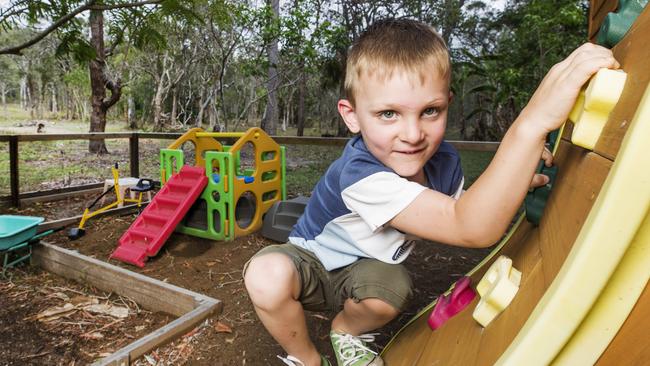
On the fourth day, they had a meeting with specialists.
Eli had some brain injury. His occipital lobe, which affects sight, and his motor cortex, which controls motor issues, were affected.
Cardiac arrest can lead to these injuries, as well as epilepsy, but the couple questions why the brain injury wasn’t picked up on the first MRI, before the tetanus shot.
“When I brought it up with a neurologist, she said, ‘I’m pretty sure it was the hypoxic insult’ [brain injury as a result of oxygen deprivation],” Cervantes says.
“From a medical perspective, you can say that. But he didn’t need to spike that fever and that’s when the twitches started. I would definitely say the tetanus shot played a very significant part in this.”
A spokesperson for Children’s Health Queensland says fever is a common side-effect of vaccines but there is no scientific evidence they cause epilepsy. In some cases, repeated brain imaging is needed to understand the extent of injury.
A week after being bitten, Eli was brought out of his coma.
“He just panicked, he just cried,” recalls Cervantes. “It was like a moan, and deep. Oh God, it was heartbreaking. The first time I held him, he was a bag of bones, he had no muscle tone. He couldn’t hold himself up. He still had a tube through his nose. And he couldn’t see anything. Imagine waking up and you can’t see anything. He couldn’t speak. He was so scared.”
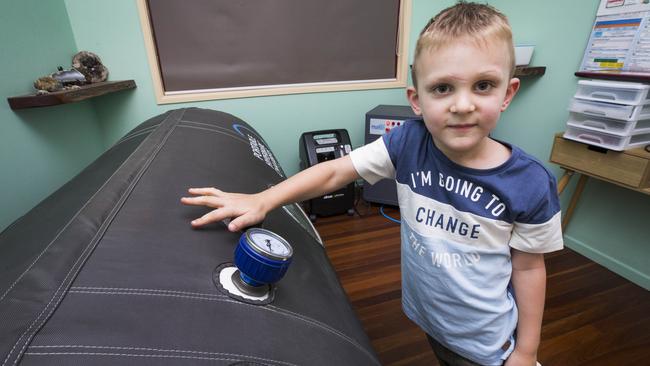
Three months of intense hospital-based rehabilitation began.
The muscle damage was a result of the venom. Eli couldn’t sit upright for two weeks. Strength in his hands was built by squeezing balls.
Speech pathologists gave him thickened liquid to encourage swallowing. He was having focal seizures, during which his face would twitch or eyes flicker.
He could only see black and white, the messages from his brain to his eyes damaged, not his eyes. He looked absent.
“Just to see that stare, that looking right past you, was the most terrifying thing,” his mother says.
But day by day, he improved. The day he reached out and pressed down on a therapy toy is etched in Cervantes’ mind. “He did a little giggle.”
She remembers the day he took his first unassisted steps in special boots. Wobbly, but walking. She remembers when they took the boots off. And she remembers the December day when she was wheeling him down a corridor and his head turned to look at a television. She stopped, wheeled back. His favourite show, Paw Patrol, was on. He laughed in the right places. His sight was coming back.
“Things were starting to click,” Cervantes says. “We were there for three months and they said Eli was probably in their top three of children who progressed this quickly.”
But Eli’s epilepsy troubled the couple deeply. In November, while in hospital, he suffered his first tonic-clonic seizure.
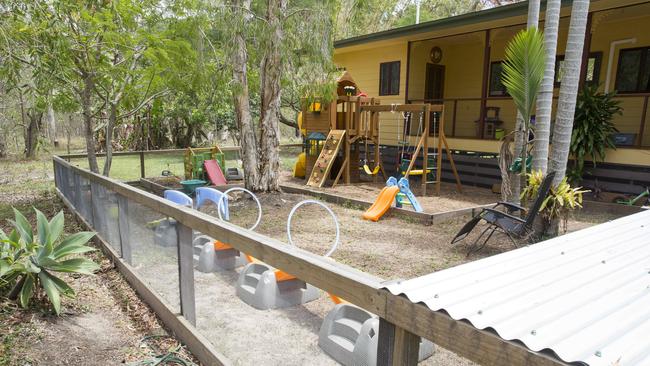
“He went unconscious, his whole body was going.” The couple was given emergency medication and training to deal with the seizures.
Campbell became obsessed with researching answers to Eli’s epilepsy and brain injury.
“He withdrew from me, he withdrew from family, he took it very, very hard. He went into full-time research mode, up all night researching.”
One of his discoveries was the use of a hyperbaric chamber to put oxygen into the brain in parts that were oxygen-starved. It’s not widely used here but a US professor in hyperbaric medicine gave them advice on how to schedule “dives”.
They bought a chamber. Campbell and Eli go in together for hourly sessions, about five times a week, until reaching a total of 40 dives before taking a break. Sometimes Eli takes his iPad, sometimes he falls asleep in there.
Cervantes says the effects are obvious. “You just see this skyrocketing of his balance, of his language. Each time, he’s just that much better.”
The family stayed in Brisbane, with Eli continuing therapy, as well as Campbell’s hyperbaric work, until after their son, Lucas, was born in April 2017. It was a planned caesarean.
It should have been the happiest of days but Cervantes recalls how she and Campbell took a seat on separate couches as they waited to be called for the birth.
“I just thought, oh God,” she says. “The reality, the reality of how far we were apart. It just hurt.”
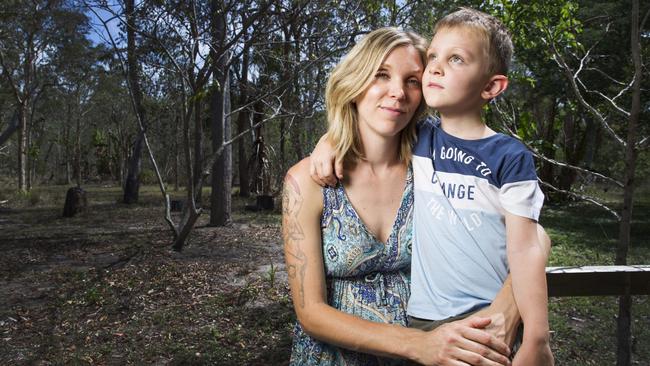
NO GOING BACK
Eli is crawling over play equipment at his Agnes Water home, giggling and chatting.
He stands up on the narrow, raised bridge, balancing. His pediatrician is amazed at his progress, Cervantes says.
“He says, ‘Taipan bite, cardiac arrest, hypoxic brain injury, epilepsy and here’s this boy walking, talking, learning’. He says, ‘Can you jump, can you stand on one leg?’ and Eli does. He just says, ‘You’re amazing’.”
Eli’s cognition is a level lower for his age and he has some coordination issues but mostly, says Cervantes, who is now a massage therapist, he is a happy, engaged four-year-old. She recently told him he was bitten by a snake. He was not overly fussed. But the trauma clings to his parents.
Big changes have been made on the property.
The chickens have gone, although the shed is still there.
Most of the vegetation that surrounded the house has been ripped out, giving a clearer view. Any holes in the rock landscaping around the swimming pool have been filled with concrete. Two Jack Russell pups, Rocket and Orbit, run about the yard, little yappers bought as an early warning system for snakes.
Eli’s orbit has grown smaller. Unless with their parents, he and Lucas play in a snake-proof zone that runs the length of the house and extends about 6m wide. Cervantes designed the fence: made of wooden beams dug into the soil, with a fine wire mesh.
Every night, Cervantes sleeps with Eli and a camera monitors him in case of seizures.
The hyperbaric work continues, with Campbell now inside the house, waiting to begin a new tranche of sessions. He does not want to be interviewed.
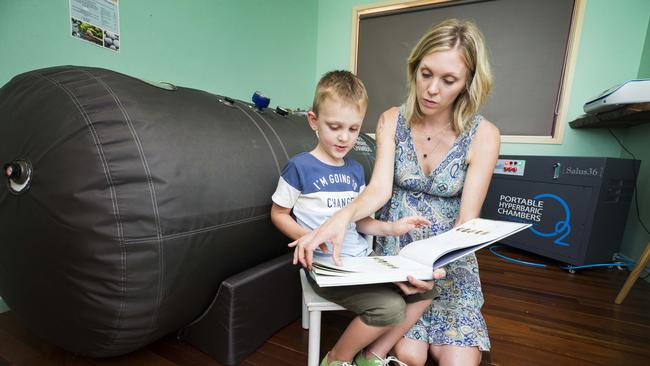
“Life is very different from what we imagined,” says Cervantes. “No one’s sleeping properly because you’ve got one eye open all night.”
Both parents suffer nightmares about snakes.
Eli has focal seizures monthly and about two potentially life-threatening tonic-clonics a year, the last one in January.
The big seizures seem to be brought on by fever. As a result, Eli is doing a home kindergarten program and his parents intend homeschooling him, at least until he’s about nine or 10. He has one playmate who visits. And Lucas, a busy, nuggety two-year-old.
“It really is a nightmare to go through an illness and watch [Eli] have a seizure,” Cervantes says. “These next few years are critical, the fever associated with illness should start to diminish. If he can handle illnesses, then Giles and I have said that will give us a little more leeway to stop being so isolated.”
The isolation and lingering trauma have crippled the couple’s relationship. Sometimes when they argue, Campbell’s anger at Cervantes for allowing Eli near the chicken shed bubbles up. “It’s hard, because he wasn’t there,” Cervantes says. “Psychologists say it’s often harder for the parent who wasn’t there because they think maybe if they had been, things would have gone differently.”
They’ve booked more counselling. “When two people have been very traumatised and not got enough help, the depths you go to. The stress.” She looks into the distance. Then Eli wanders to her side, after a snack, and she smiles.
Before we leave, Eli shows off his hyperbaric chamber, or to him, his submarine. Then he wants to play with his favourite toy, a cash register complete with scanner.
“Press the green button, press it,” he says. It beeps. “Pretty cool, huh?” I owe $20. “You have how much?” he asks. “I only have two dollars.” “Hmmm,” he says, thoughtfully, “better go to the bank.”
When that taipan slithered away into the scrub, it took their serenity, warped their love and ambushed their dreams. It took the idyllic life they’d planned. But it didn’t take little Eli. ■
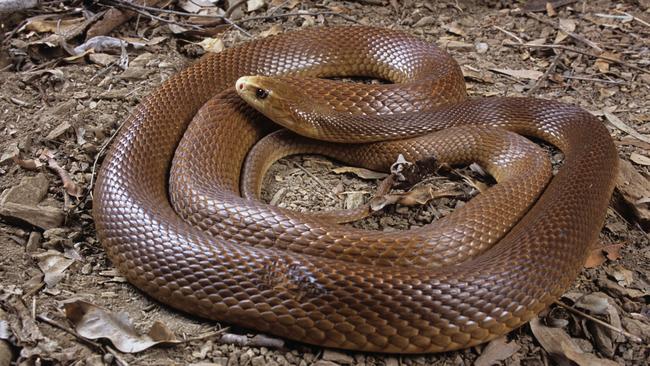
WHAT TO DO IF YOU ARE BITTEN BY A SNAKE
● Call triple-0
● Stay still
Venom travels via the lymphatic system to the bloodstream. Unlike blood, which is pumped around your body continuously, your lymph (a fluid that contains white blood cells) moves when you move your limbs. Staying still and calm can prevent any venom in your lymph travelling further. Not moving could save your life.
Stay where you are if the snake has gone. Instead of running for help, use a mobile or get someone else to find help.
● Do not wash or cut the wound, or apply a tourniquet
Preserving the venom on the site can help medical staff identify the snake.
● Apply a pressure immobilisation bandage and splint
Place a medical pad or even cling wrap on the wound to preserve the venom for later testing. Bandage over the bite site tightly but not so much it stops blood flow. Use a second bandage just above the fingers or toes and continue upwards on the bitten limb as far as the bandage reaches. Tear a T-shirt or other fabric if you don’t have a bandage.
Once the bandage is on, mark the bite site with a pen, or even mud. Do not remove the bandage until medical help arrives; doing so will lead to rapid systemic spread.
Splint the limb to keep it still. A stick, rolled-up newspaper, even firmly rolled-up clothes will do.
● If the patient goes into cardiac arrest, do CPR until help arrives
Edited version of Queensland Health advice for venomous snakebite, December 2018
RECENT FATAL TAIPAN BITES
December 2016: David Pitt, 77, of Yorkeys Knob, was bitten twice on his foot after he tried to use kitchen tongs to remove a taipan from his bedroom.
April 2016: Snake catcher Wayne Cameron, 54, of Rockhampton was bitten after being called to relocate a taipan found in a duffel bag.
October 2015: Robert Brearley, 62, died from a suspected taipan bite while working in long grass at his property at Toolakea Beach, Townsville.
November 2012: Ergon Energy worker, Andrew Vaughan, 57, found dead after checking powerlines in the bush near Yeppoon, north of Rockhampton. An autopsy identified a taipan bite as the cause.


Add your comment to this story
To join the conversation, please log in. Don't have an account? Register
Join the conversation, you are commenting as Logout
Shock twist: Drug pilot’s case of history repeating
A pilot jailed for flying a small plane into Australia full of drugs did the same thing a decade earlier under a different name but escaped prison because the court heard he had cancer. See the latest twist to this story.
Treasurer’s personal chauffeur doubles as an Uber driver
Next time you ride in an Uber, consider the fact that the driver may well also be the personal chauffeur of the Treasurer of NSW.